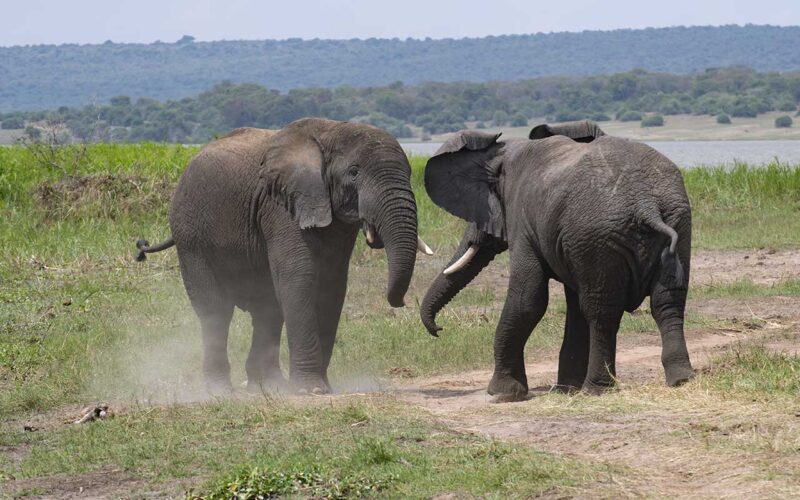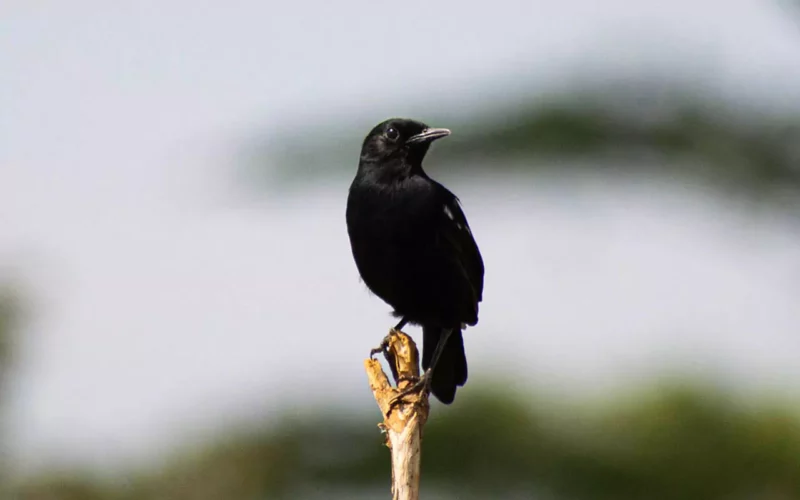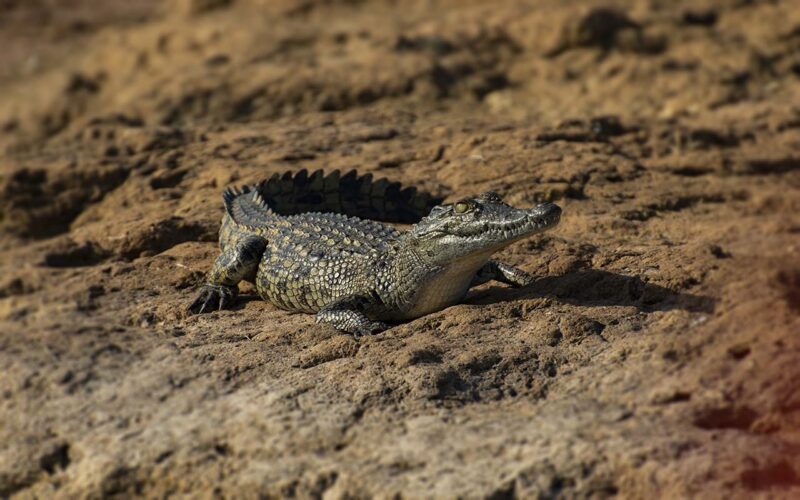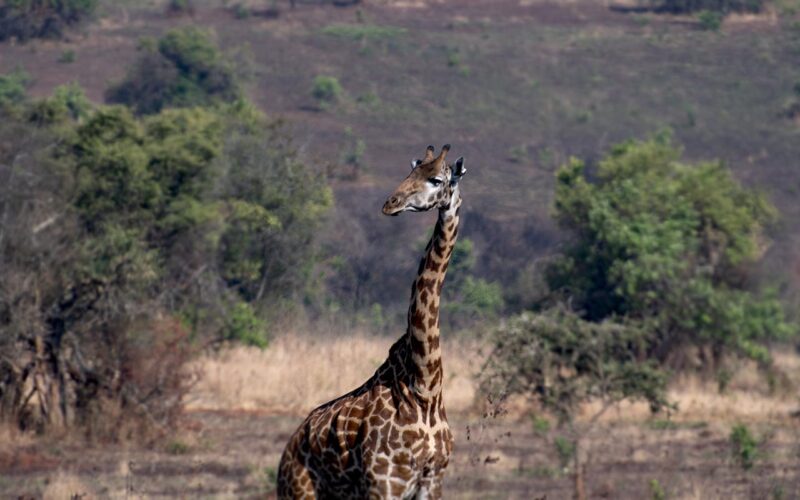Akagera National Park lying only 110km or 2.5hr drive east of Kigali City is Rwanda’s biggest and Big-5 wildlife safari park offering a typical off-the-beaten-track and unmatched African safari experience. With an area of 1,122km2 Akagera National Park boasts a blend of unspoilt, untamed and game-rich habitats that supports an impressive biodiversity of exciting game, birdlife and stunning landscapes.
Akagera National Park’s top activities and attractions include; an African Big-5 game-viewing expereince, excellent boat safaris, wilderness camping, walking safaris, community tours and rewarding bird watching experience.
Brief History and Restoration
Established in 1934, Akagera National Park sprawls over a 1,122km2 area along Rwanda’s eastern border with Tanzania. The scenic and relatively flat wilderness park is named after river Kagera that meanders through a maze of papyrus swamps, wetlands and marsh creating several lakes before exiting on the northeast of the park to drain into Lake Victoria.
Akagera National Park suffered extensive poaching of the late 1980s and ’90s, that brought the park’s wildlife population to almost extinction. But in 2010, RDB a Rwanda government agency and African Parks an NGO entered a management partnership that has led to reintroduction programs of apex species back into this wilderness and community working relationship.
The return of the Big 5 into Akagera NP began in 2015 when 7 lions were reintroduced after over a decade of local extinction. The return of this apex predator not only brought back Akagera’s glory but the balance in the entire ecosystem.
Fast-forward, 18 black rhinos brought in 2017 after a decade since the last rhino was sighted across these habitats. Then in 2021, 30 white rhinos were introduced and thereafter 100 individuals were added in 2025 making it the largest ever translocation of these endangered species.
Akagera NP today is one of the best conservation success stories, an inspiring testimony of re-birth and resilience just like Rwanda itself!
Akagera National Park – Wildlife Biodiversity Overview
Akagera National Park is biodiversity haven due to its geographical location at the confluence of Africa’s top biomes between the East African savanna grasslands and West African rainforests.
Akagera National Park’s diverse habitats of extensive wetlands dotted with up to six lakes, woodlands, grassland plains, rolling hills and rugged landscapes protect the iconic African Big-5 (rhinos, elephants, buffalos, lion and leopard) and more than 500-bird checklist. Elsewhere the park supports a large number of Elephants, both Black and Southern White rhinos, Impala, Leopard, Hyena and buffalo alongside Masai Giraffe, Eland and Topi among other species.
Akagera National Park has rebounded to become one of the best wildlife viewing wildernesses offering an authentic and a typical off-the-beaten-track African wildlife safari experience across its uncrowded, untamed and game-rich habitats.

Attractions and Activities to do while at Akagera National Park
-
Take a Big 5 Wildlife Safari in Akagera National Park
Akagera National Park offers an excellent and almost exclusive game viewing safari across its unspoilt and uncrowded vast wilderness. Akagera NP boasts a few travelers making game viewing expereince more personal as you encounter up-close to all the Big-5 listers, birdlife and a great host of wildlife. Game viewing tours in Akagera NP follows an excellent network of game tracts that expose the park’s diversity of habitats characterized by woodlands, savanna grasslands, wooded ridges, and extensive wetlands fed by the Kagera river.
Best wildlife highlights while on game-viewing drive safari in Akagera NP include both Black and Southern-White rhinos, dozens of African Elephant, Plains Zebra, herds of Cape Buffalo, towers of Masai Giraffes, the Impala, Topi, Common Eland, Defassa Waterbuck, Impala and Bushbuck among others.
Apex predators include healthy prides of Lions, the elusive Leopard, Side-striped Jackal, while Hyenas are regularly seen on early morning and late drives.
The boat cruise safaris especially on Lake Ihema offer chances to view upclose the semi-aquatic Hippo commonly seen in large schools while the prehistoric Nile Crocodiles is often seen along the sand banks.
Night game drives in Akagera NP offer a rewarding expereince to encounter nocturnal specialists including apex predators on a hunt or territory patrol.
Whereas Akagera NP can be visited on a day-trip from Kigali, it is more rewarding to have at least two days here to explore and appreciate this wilderness’ unique diversity. And while on a safari here, take it slow, watch out for prints, tracks, and signs by the park residents, listen for sounds and clattering, and soak in the spectacular scenery of rolling hills that shape this true African wilderness.

-
Birdwatching in Akagera National Park
Akagera National Park is a top birding destination and Rwanda’s best birding hotspot due to a diversity habitats it protects, where a checklist of 500 species is recorded. These bird-rich habitats include vast wetlands, broad-leafed woodlands and grasslands. The Kagera river wetland complex is the largest protected wetland in the Central Africa and an Important Bird Areas (IBA’s) hosting several Lake Victoria restricted biome species including Papyrus Gonolek, Papyrus Yellow Warbler, Lesser Jacana, White-winged Swamp Warbler, Carruthers’s Cisticola, Northern Brown-throated Weaver and Shoebill plus seasonal visiting Palearctic migrants.
The wetlands and its numerous freshwater lakes host various waders including; African Darter, Great Cormorant, Grey and Purple Herons, Little and Great Egrets, Blue-breasted Bee-eaters, Long-toed Lapwing, Yellow-billed Ducks, Spur-winged Goose and more. Malachite and African Pied Kingfishers are common on water edges.
The extensive acacia woodlands and shrub support a cast of species most of which are at their northern range limits including Long-tailed Cisticola, Southern Black Flycatcher, Souza’s Shrike, White-faced and Black-collared Barbets and the Red-faced Barbet an East African endemic.
Other highlights include; Purple-crested Turaco, Emerald-spotted Wood Dove, Greater Honeyguide, Narina Trogon, African Grey-hornbill, Green Woodhoopoe, Striped Kingfisher, Ruppel’s Starling, Lilac-breasted Roller, Pearl-spotted Owlet, Golden-tailed and Bennett’s Woodpeckers, Brown Snake Eagle, Bare-faced Go-away birds Pale-eyed Black Tit, feature regularly on our checklists. Grassland specialists include; Rufous-naped and Flappet Lark, Grassland Pipit, Senegal and African Wattled Lapwings, Clapperton’s, Cucqoi and Crested Francolins occur while Southern Ground Hornbill and Black-bellied Bustard are rare.
Large raptors represented include Martial, Walberg, Bateleur, and Tawny Eagles while vultures are Griffon, White-backed, White-headed and Lappet-faced.
On night drives, Spotted and Verreaux’s Eagle-owls, Freckled, Black-shouldered are seen and heard with Swamp nightjar rare, and when in the right season Pennant-winged Nightjars in their breeding glory.

-
Take Boat Cruise Safari on Lake Ihema
A boat cruise on Lake Ihema is a popular highlight while on a safari in Akagera National Park. The boat safari explores the wildlife rich banks getting you up-close to the semi-aquatic Hippo pods, Nile Monitor, Nile Crocodiles and Otters. Birding is excellent where highlights include; Yellow-billed Ducks, White-faced Whistling Ducks, African Darter, Great Cormorants, Pink-backed Pelicans, Long-toed Lapwing, and the delicate African Jacana. The quiet water edges host the rare and elusive Finfoot.
Waterside woodlands host colonies of Lesser Masked, Little and Slender-billed Weavers and hunted by Shikra and African Goshawk while Hamerkop known for their gigantic nests patrol the water edges.
Excellent private sundowner boat cruises outside the normal schedule are arranged on request.
-
Take a guided Walking Safari in Akagera National Park
Spice up your wildlife safari in Akagera National Park as you embark on a guided walking tour to discover a unique natural world often not accessible while in a game drive vehicle. The guided walking tours are tailored to your interests ranging from up-close walks with rhinos, birding walks, to general wildlife and adventure. Tours’ duration range from as short as 2-hrs to half or full day walks.
-
Take a Community Tour
Communities around Akagera National Park offer interactive community experiences where one engages in variety of activities that include beekeeping, traditional milk experiences and traditional crafts often by women cooperative groups. These local guided excursions last anywhere from 2-4 hrs or even up to a full day.

Tips and guidelines when Planning to visit Akagera National Park
What is the best time to visit Akagera Natuional Park?
Akagera National Park can be visited all-year however it should be noted that wildlife viewing expereince varies by season. The dry months mostly from June to Sept and Dec to Feb offer better wildlife viewing expereince because wildlife then is concentrated around and near water making game drives easy.
The wet season which falls around Feb -June and Sept – Dec brings along freshness in the air and abundance of grass meaning wildlife tend to scatter far and wide. The rains which also make several game tracks impassable brings along freshness and the scenery is impressive.
How to get to Akagera National Park
Akagera National Parks’ main entrance of Kiyonza Gate lies only 2.5hrs drive from Kigali City. In the north of the park, Nyungwe Gate is an exit only – visitors cannot enter the park here.
Where to stay while at Akagera national Park
Akagera national park is served with excellent facilities both within the park an along its boundaries. The style and comfort is variable ranging from campsites, to luxury tented camps that offer that wilderness feel to standard roomed facilities.
Located inside the park, the excellent Ruzizi Tented Lodge sits on the edges of Lake Ihema while its cousin Karenge Bush Camp is set in the north part of the park offering an intimate wilderness expereince. Wilderness Magashi Camp, a new comer in Akagera National Park sits on the shores of Lake Rwanyakizinga surrounded with a haven of wildlife and birdlife, offers private and intimate luxury expereince in the wilderness.
The long standing and newly rebranded Mantis Akagera Game Lodge is another excellent facility set along the ridge offering an all-round views of the Akagera wetland with its chain of lakes.
Outside Akagera National Park are more excellent accommodation facilities catering for all classes of comfort from super luxury to mid-range to private campsites and community guesthouses.
